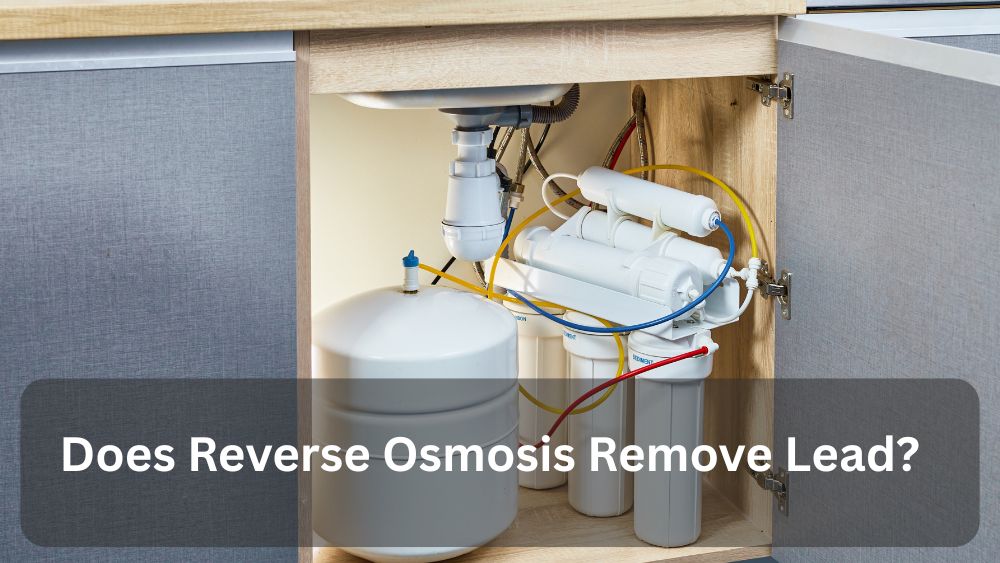Lead contamination in drinking water is one of the most dangerous yet invisible threats to health. Unlike iron or chlorine, you can’t smell, taste, or see it. Even tiny amounts of lead exposure over time can cause neurological issues, developmental delays in children, kidney damage, and cardiovascular problems.
So the big question for many homeowners is: Does a reverse osmosis (RO) system remove lead? The answer is yes—RO is one of the most effective methods for removing lead from water. Let’s explore how it works, why it matters, and what you should know to keep your water safe.
Key Takeaways
- Reverse osmosis (RO) can remove up to 95–99% of lead from drinking water【EPA, 2022】.
- Lead enters water from corroded pipes, plumbing fixtures, and old solder joints.
- RO membranes filter out dissolved lead ions thanks to ultra-fine pores of 0.0001 microns.
- Pre-filters, membranes, and post-filters work together for comprehensive lead removal.
- Regular testing and maintenance ensure consistent protection.
Why Is Lead Dangerous in Drinking Water?
1. Health Risks of Lead
- Children: Developmental delays, reduced IQ, behavioral problems.
- Adults: Kidney damage, heart disease, and reproductive issues.
- Pregnant women: Increased risk of miscarriage and harm to fetal brain development.
Stat Insight: The U.S. CDC states that no safe blood lead level exists for children【CDC, 2021】.
2. Common Sources of Lead
- Old lead pipes in water distribution systems.
- Plumbing fixtures and faucets with lead solder.
- Contaminated well water near industrial sites.
How Does Reverse Osmosis Work?
RO purification involves pushing water through a semi-permeable membrane under pressure.
- Water molecules pass through.
- Contaminants like lead, arsenic, nitrates, and bacteria are rejected.
- Purified water is stored in a tank, while waste water (reject stream) is drained away.
How Does Reverse Osmosis Remove Lead?
1. Filtration Through Microscopic Pores
The RO membrane has pores of 0.0001 microns, small enough to block dissolved lead ions.
2. Multi-Stage Purification
- Sediment filter: Removes dirt and rust, protecting the membrane.
- Carbon filter: Removes chlorine and organics.
- RO membrane: Blocks dissolved salts and metals like lead.
- Post-carbon filter: Polishes taste before water reaches the faucet.
3. Ion Rejection
Lead typically exists as positively charged ions (Pb²⁺). The membrane rejects these ions due to their size and charge.
How Effective Is RO in Removing Lead?
- EPA studies show RO systems remove 95–99% of lead【EPA, 2022】.
- NSF/ANSI Standard 58 certifies RO units for lead reduction.
Example:
- Raw water lead concentration: 100 parts per billion (ppb).
- RO-treated water: <5 ppb (well within EPA safe limit of 15 ppb).
RO vs Other Lead Removal Methods
| Method | Effectiveness | Limitations |
|---|---|---|
| Reverse Osmosis | 95–99% | Needs electricity, wastes some water |
| Activated Carbon | 50–90% | Less effective for dissolved lead |
| Distillation | 99% | Slow, energy-intensive |
| Ion Exchange | 90–95% | Requires resin replacement |
| Faucet Filters | 50–70% | Good for short-term, less reliable |
RO stands out as a cost-effective, long-term solution for households.
Does RO Remove Lead from All Sources?
Yes, whether lead comes from pipes, plumbing fixtures, or well water, an RO system can reduce it to safe levels. However:
- If the contamination source is active plumbing (old lead pipes), pipe replacement is also recommended.
- RO handles dissolved lead but doesn’t fix the root cause in your plumbing.
How to Test Water for Lead Before Installing RO?
- Lab Testing: Most accurate method, especially for homes built before 1986.
- EPA-approved Test Kits: Affordable for homeowners.
- Regular Monitoring: Especially important in areas with aging infrastructure.
How to Ensure Your RO System Continues Removing Lead
1. Replace Filters on Time
- Sediment and carbon filters: every 6–12 months.
- RO membrane: every 2–3 years.
2. Maintain Proper Water Pressure
RO needs 40–60 PSI for optimal performance.
3. Sanitize the System Annually
Prevents bacterial growth that can interfere with filtration.
4. Check for NSF Certification
Choose systems certified to NSF/ANSI Standard 58 for lead reduction.
Costs of Removing Lead with RO
| Component | Cost (USD) |
|---|---|
| Household RO System | $150–$500 |
| Replacement Filters (annual) | $40–$80 |
| RO Membrane (every 2–3 yrs) | $30–$70 |
| Professional Installation | $100–$200 |
Electricity cost: Minimal (~$1–$3/month).
Limitations of RO for Lead Removal
- Rejects 2–3 liters of water for every 1 liter purified.
- Removes beneficial minerals along with lead. (Solution: use remineralization cartridges.)
- Requires regular maintenance.
Frequently Asked Questions
Does boiling water remove lead?
No. Boiling actually increases lead concentration as water evaporates.
Are pitcher filters effective against lead?
Some NSF-certified pitcher filters reduce lead, but they’re less reliable than RO.
Is RO enough to make water completely safe from lead?
Yes, for drinking purposes. But fixing old lead pipes is also necessary for long-term safety.
Conclusion
So, does reverse osmosis remove lead? The answer is a resounding yes. RO systems can eliminate up to 99% of lead, providing safe drinking water for your family.
Here’s the bottom line:
- Lead is highly toxic, even in tiny amounts.
- RO membranes effectively block dissolved lead ions.
- Regular maintenance and certification checks ensure consistent performance.
If you live in an area with aging pipes or high risk of contamination, investing in an RO purifier isn’t just about taste—it’s about safeguarding your health.

Hasan Al Sarker is a Reverse Osmosis Specialist. He has worked for many years to ensure safe drinking water for all. His research paper has been published in several journals, including Issue, Medium, and Slideshare. He is recognized as a water doctor among specialists though he did not attend medical college.
Besides working as a researcher of reverse osmosis technology, he is also very fancy with the kitchen and cooking. His guides are reading thousands of people every day. As a head of content, he is responsible for all the published articles at RO System Reviews.

